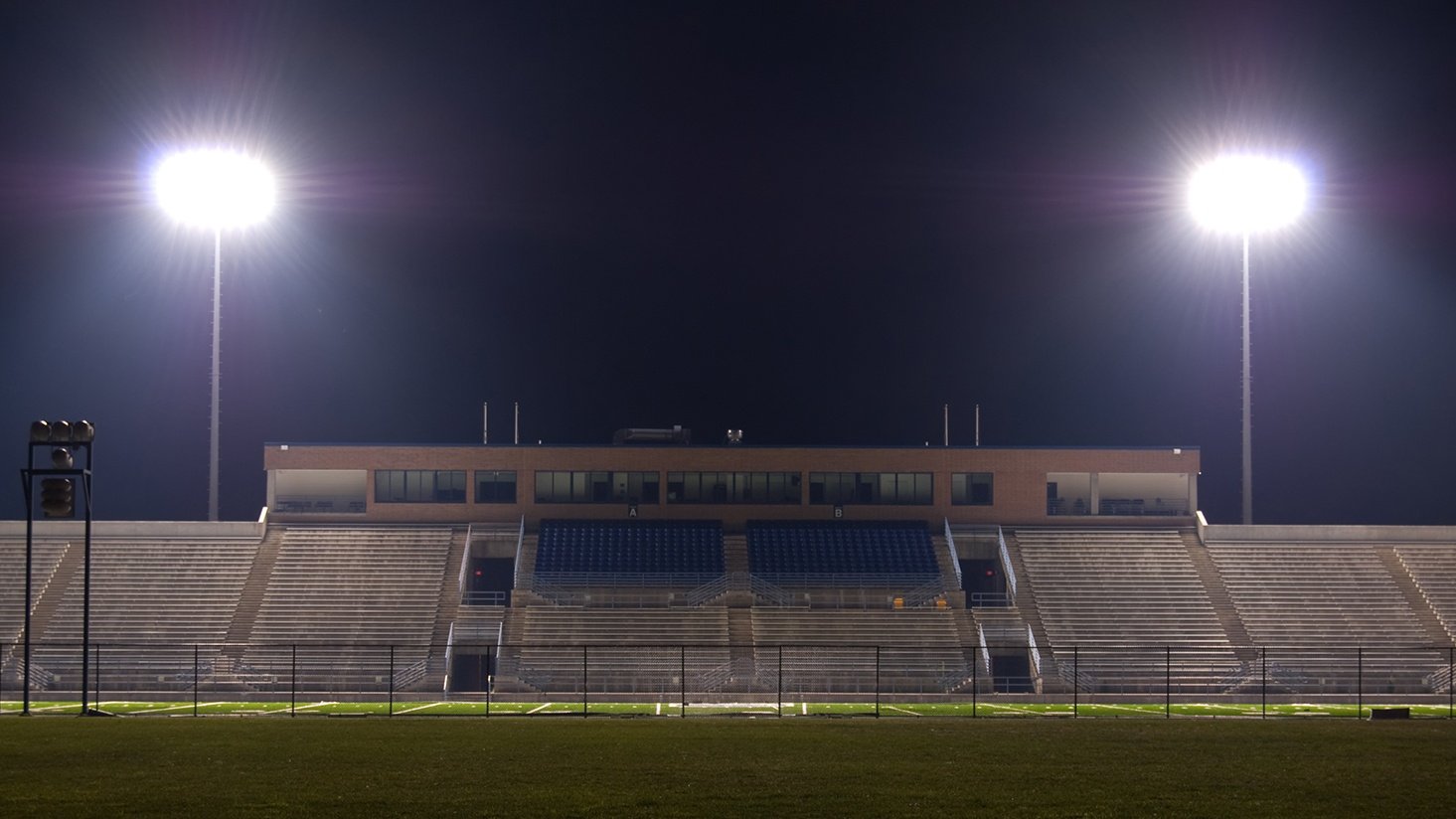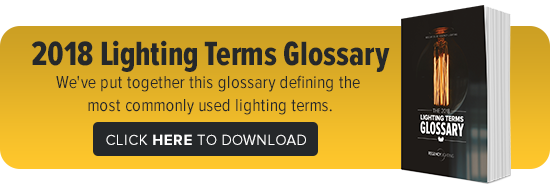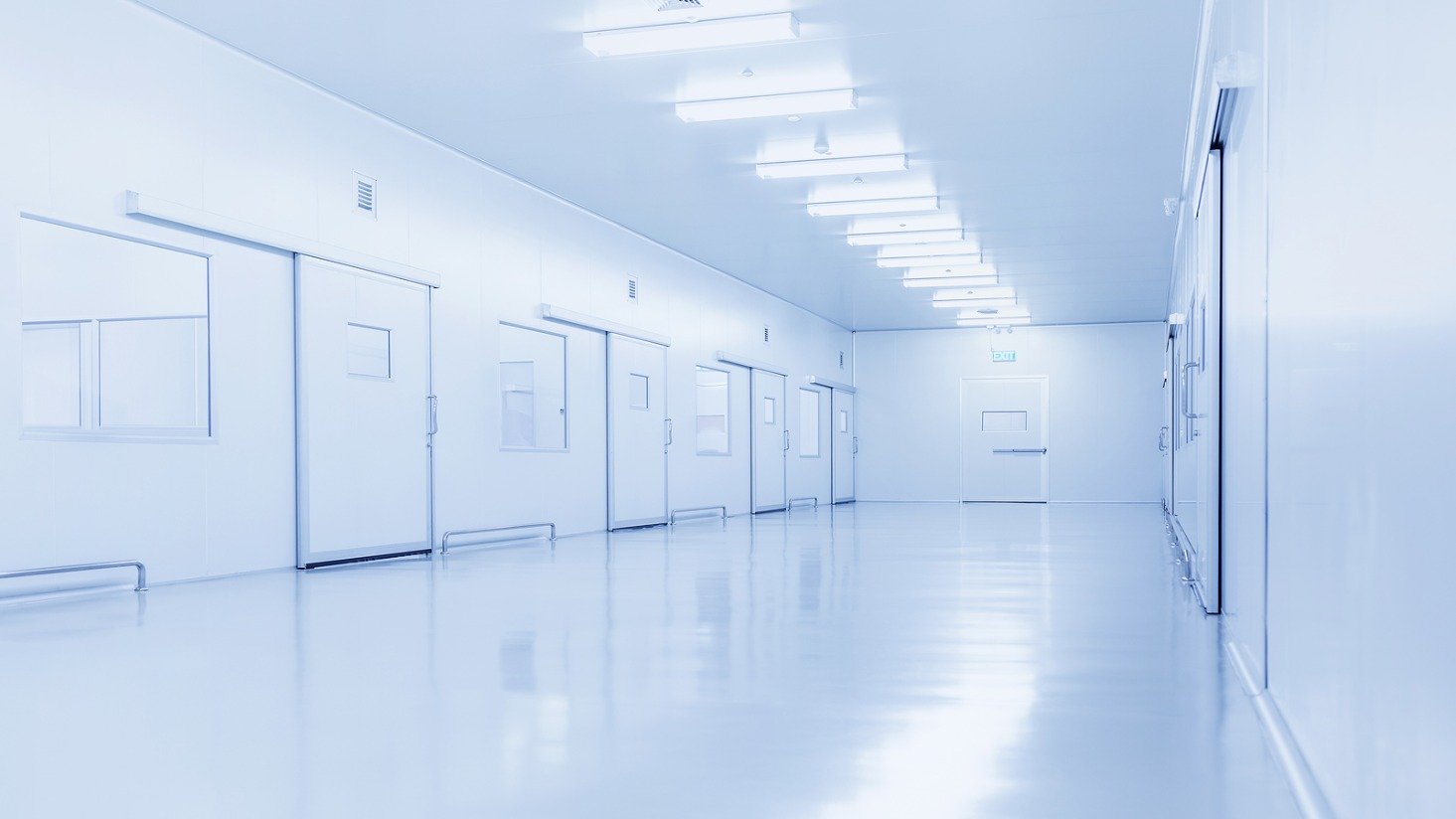What is HID lighting? Is it right for your application?
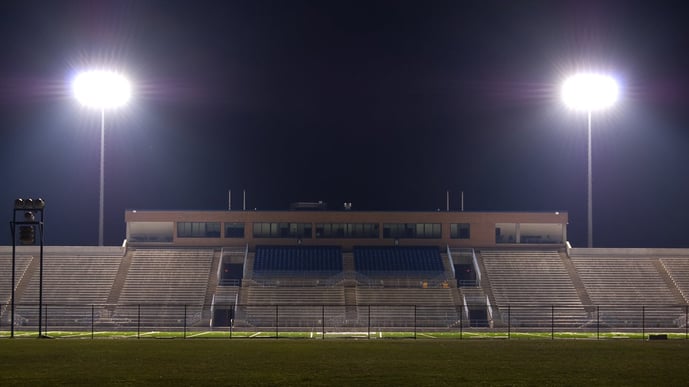
When I first started working at Regency, I knew little about lighting. I knew what an incandescent light bulb was and who Thomas Edison was. I knew that the lighting that came in tubes was fluorescent. And I knew that LEDs were becoming a thing. Beyond that, pretty much nada.
So needless to say, when I was in lighting training and first heard about high intensity discharge (HID) lighting technology, I had no real framework for what that was or where it was used. It just sounded foreign. And, well, intense.
Did you know that HID lamps were the culprit for the 30-minute delay during the Super Bowl a few years back? I learned that, and understood why the delay was so lengthy, during training. I also learned how the technology works and what makes it so powerful, as well as the pros and cons of using it in your application. Over the years, I've seen these things practically applied in an everyday setting. And now, I have to say – HID may be the most fascinating lighting technology I can think of.
So, what is HID lighting?
HID lamps have an arc which passes between two electrodes in a pressurized tube causing various metallic additives to vaporize and release large amounts of light. The electricity first enters through the ballast in the fixture containing an HID lamp. The starter inside the ballast provides the initial high-voltage jolt of electricity, which ignites the HID bulb.
What is a ballast? We explain it here.
Once the electricity enters through the base of the HID lamp, it flows into a sealed glass envelope (the arc tube) which contains gas and metallic salts. The gas helps with the initial strike of the light. And once the gas is excited, it heats up and vaporizes the metallic salts.
After all this occurs, a roiling plasma is created, which is essentially a chemical combustion producing artificial light. This light is bright and powerful enough to throw a ton of lumens an extremely long distance.
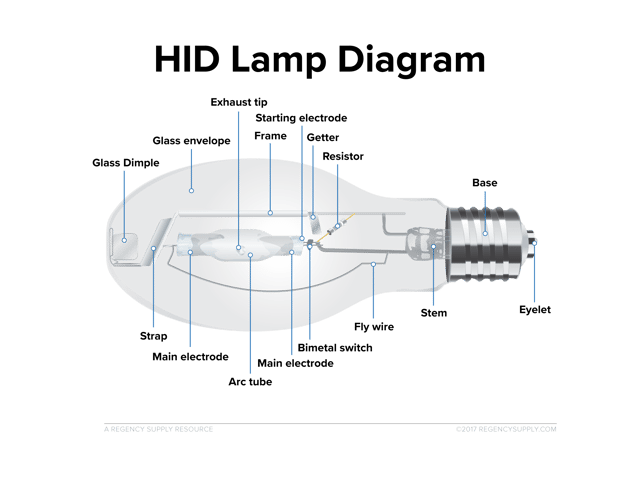
Here’s a super important note to keep in mind about HID lamps: Because of the presence of the roiling plasma inside the arc tube, if an HID lamp breaks and that envelope busts, RUN. If you’re caught near the roiling plasma, you’ll actually experience a chemical burn due to the UV radiation.
Also, it’s worth noting that HID lamps need to be recycled.
Where do you use HID bulbs?
Because of the powerful light HID lamps emit they are typically used in applications where you need a lot of light. Some examples would be:
Stadiums
Some stadiums use 60 HID lamps – each about 1,000 watts – in one of their suspended light banks over the field. That’s why Monday Night Football games can look like they're being played at high noon. The total lumen output of stadium lighting is wild.
Parking garages and gas stations
Anybody want to park in a 20-story incandescent-lit parking garage? No thank you! My rule of thumb is, the more light, the safer it is. Now, that’s not always true but it definitely feels like that's the case.
Street lights
The original HID lamp – mercury vapor – was actually invented for street lights. Today, mercury vapor has been all but totally phased out in the U.S. and has been largely replaced by metal halide and high pressure sodium (HPS) lamps.
Retail
Some retail stores, like Forever 21 and H&M, use ceramic metal halide HID lamps to create a well-lit atmosphere to support brands targeting wide audiences.
Should you use HID or LED or something else? HID pros and cons explored
If you're responsible for lighting in one of the above settings, you may be considering HID as an option. We're here to make lighting easier, so we thought it would be helpful to offer some pros and cons on HID lighting to make sure you have a good, objective foundation of information before trying to make a lighting purchase.
HID pros
- Throw a lot of light a long way
- High pressure sodium HID lamps have limited light pollution compared to LED and metal halide
- Despite their terrible light quality, low pressure sodium lamps last a very long time! Historically, this has been a great application for factories that need minimal light but operate their bulbs 24/7
HID cons
- LED and fluorescent T5s are more energy efficient
- Color shifting: over time, HID lamps will turn pink, green, or purple
- Although HID lamps last 20,000 hours, their light output begins to depreciate at about 10,000 hours
What about retrofitting HID to LED?
I don’t want to dive into a whole new topic here, but here are a two important items to consider if you're looking for answers related to the above question.
Delivered lumens
Although HID lamps may have a higher lumen output than some LED lamps, if you measure the amount of light that actually reaches the task area from the fixture, most of the time you’ll have a higher delivered lumens rating with LED bulbs.
Government regulations on HPS lighting
There are certain districts that require by law that street lights have a high pressure sodium kelvin temperature and CRI. If this is true for your area, be sure to purchase an LED-equivalent HPS. This will give you the same color temperature and limited light pollution, but last longer and use less energy.
If you read all of this and you think, “Man, this is not for me. I just want to know what bulb to use where.” Try talking to one of our lighting experts! They're trained to navigate all these complexities for you and deliver simple solutions. Email them HERE.
You don't need to be an expert. Click here to learn how to make lighting fit your needs.
